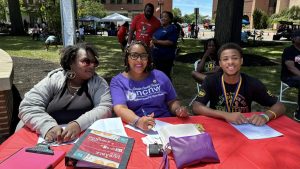
The National Council of Negro Women (NCNW) Lorain County, OH Section, is a member of NCNW, whose mission is to lead, advocate and empower women of African descent, their families and communities. NCNW was founded in 1935 by Dr. Mary McLeod Bethune, an influential educator and activist, and for more than 50 years, its national president. Billing itself as an “organization of organizations,” NCNW comprises 330 campus and community-based sections and 33 national women’s organizations that enlightens, inspires and connects more than two million women and men. NCNW focuses on economic empowerment and entrepreneurship, health equity, social justice and education. The Lorain County Section fulfills the NCNW mission through community service activities, projects, events and collaborations with community partners and affiliate organizations. Projects and programs include an eight-week course that teaches life skills to local high school seniors that culminates with a formal ball.

National Council of Negro Women Lorain County, OH Section participates in a 2024 Juneteenth celebration by providing organization, vaccination and voter registration information.
Lorain is a city in Lorain County and is located in northeast Ohio on Lake Erie at the mouth of the Black River, about 25 miles west of Cleveland. As of the 2020 census, the city had a population of 65,211. The Lorain U.S. Steel Plant still remains an industrial icon of the county. However, Lorain, once also home to the American Ship Building Company Lorain Yard and the Ford Motor Company Lorain Assembly Plant, has a deindustrialized economy. Lorain County faces several environmental issues, including toxic chemical releases and threatened water quality. In 2021, 37 facilities in Lorain County released 1,929,839 pounds of 138 different toxic chemicals into the environment. The industries that released the most chemicals were hazardous waste (80.5%), chemical manufacturing (13.5%), and electric utilities (3.9%). The city faces many similar issues to other Rust Belt cities, including population decline and urban decay. Poverty in the city is above the national average at 26.2 percent.